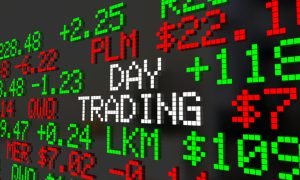Broad Money is a comprehensive measure of a country’s total money supply, encompassing not only the physical currency in circulation but also various types of deposits and other liquid assets held by the public in financial institutions. It includes components such as cash, demand deposits (like checking accounts), savings deposits, time deposits, and money market funds. Broad money is a key indicator used by economists and policymakers to assess the overall liquidity in an economy, which can influence inflation, interest rates, and economic growth.
Key Components of Broad Money:
- M1 (Narrow Money):
- Definition: M1 includes the most liquid forms of money, such as physical currency (coins and banknotes) in circulation and demand deposits in checking accounts that can be quickly converted into cash or used for transactions.
- Example: Cash in your wallet and money in your checking account are part of M1.
- M2 (Near Money):
- Definition: M2 includes all components of M1, plus slightly less liquid forms of money such as savings deposits, small time deposits (like certificates of deposit under a certain amount), and money market mutual funds. M2 represents money that is easily accessible but not as liquid as M1.
- Example: Money in a savings account or a short-term certificate of deposit would be included in M2.
- M3 (Broader Definition of Money):
- Definition: M3 includes all components of M2, as well as larger time deposits, institutional money market funds, and other large liquid assets. M3 captures the broader spectrum of the money supply, including assets that are less liquid but still relatively easy to convert into cash.
- Example: Large time deposits held by corporations or other large financial instruments would be part of M3.
- M4 (Even Broader Definitions):
- Definition: In some countries, M4 may be used as a further extension of the money supply, including all components of M3 plus additional financial assets like longer-term deposits or certain types of non-bank financial institution deposits.
- Example: In the UK, M4 includes deposits held by non-bank financial institutions, providing an even broader view of money in the economy.
Importance of Broad Money:
- Economic Indicator:
- Definition: Broad money is an important indicator of the money available in the economy for spending and investment. Central banks and policymakers monitor broad money to gauge the level of liquidity in the economy and make decisions on monetary policy.
- Example: A rapid increase in broad money might indicate rising inflationary pressures, prompting the central bank to raise interest rates.
- Influence on Inflation:
- Definition: Changes in the money supply, particularly broad money, can influence inflation. If broad money grows too quickly relative to the economy’s output, it can lead to higher inflation, as more money chases the same amount of goods and services.
- Example: During periods of high inflation, central banks may implement policies to reduce the growth of broad money to stabilize prices.
- Impact on Interest Rates:
- Definition: The supply of broad money in the economy can affect interest rates. A higher supply of money typically leads to lower interest rates, encouraging borrowing and spending, while a lower supply can lead to higher rates.
- Example: If the central bank wants to stimulate economic growth, it may take actions that increase the broad money supply, thereby lowering interest rates.
- Measurement and Reporting:
- Definition: Central banks typically report on the various measures of money supply, including broad money, as part of their regular economic assessments. These reports help analysts and investors understand the current state of the economy.
- Example: The Federal Reserve in the U.S. reports on measures like M1 and M2, while other countries might also report on broader measures like M3 or M4.
Summary:
Broad Money is a comprehensive measure of a country’s money supply that includes cash, checking deposits, savings deposits, time deposits, and other liquid assets. It provides a broader view of the money available in the economy compared to narrow measures like M1. Broad money is crucial for understanding liquidity, inflation, and interest rates, and is closely monitored by central banks and policymakers to guide economic and monetary policy decisions.







